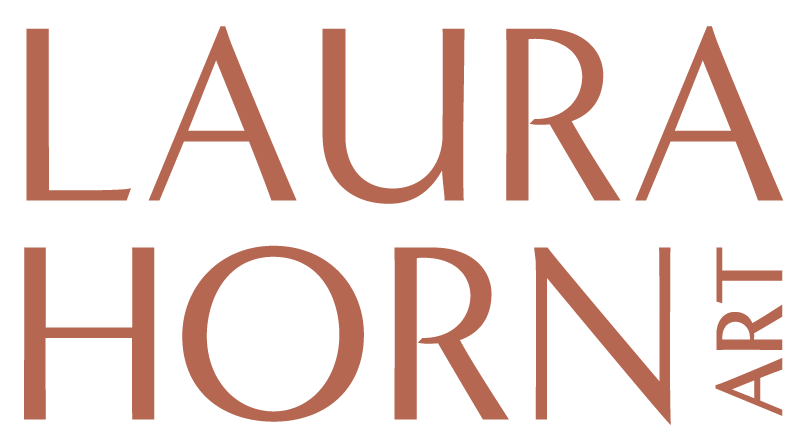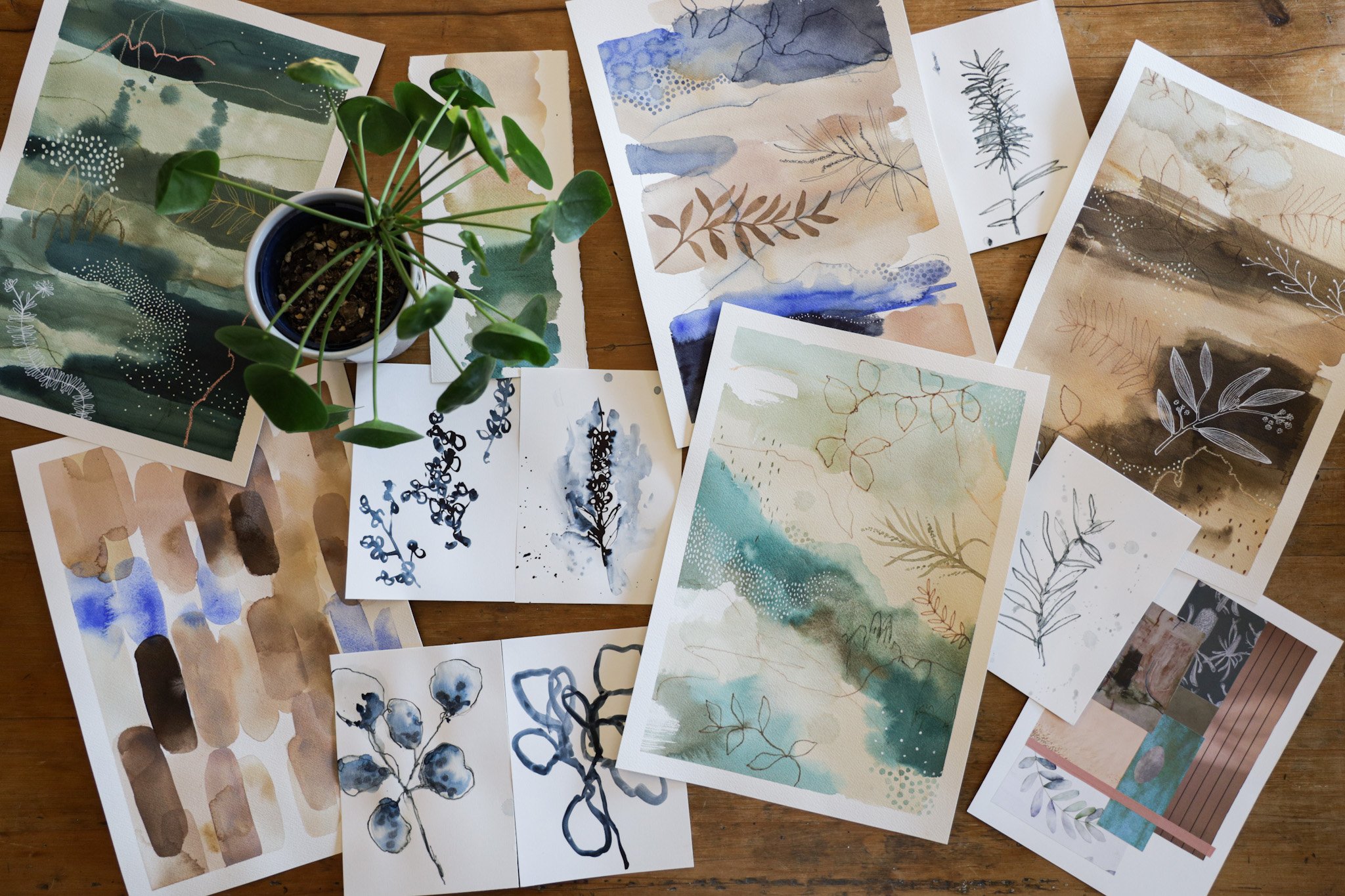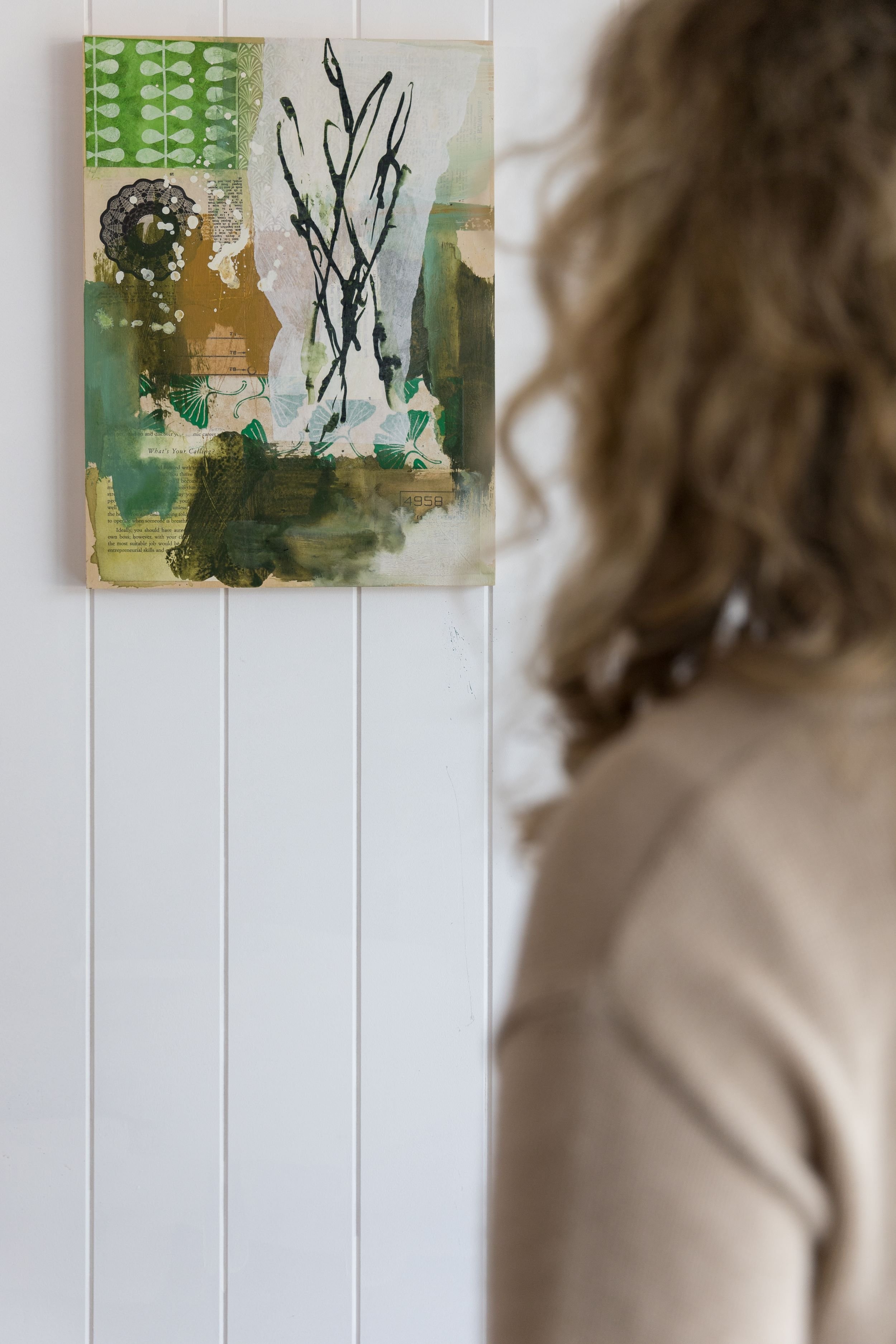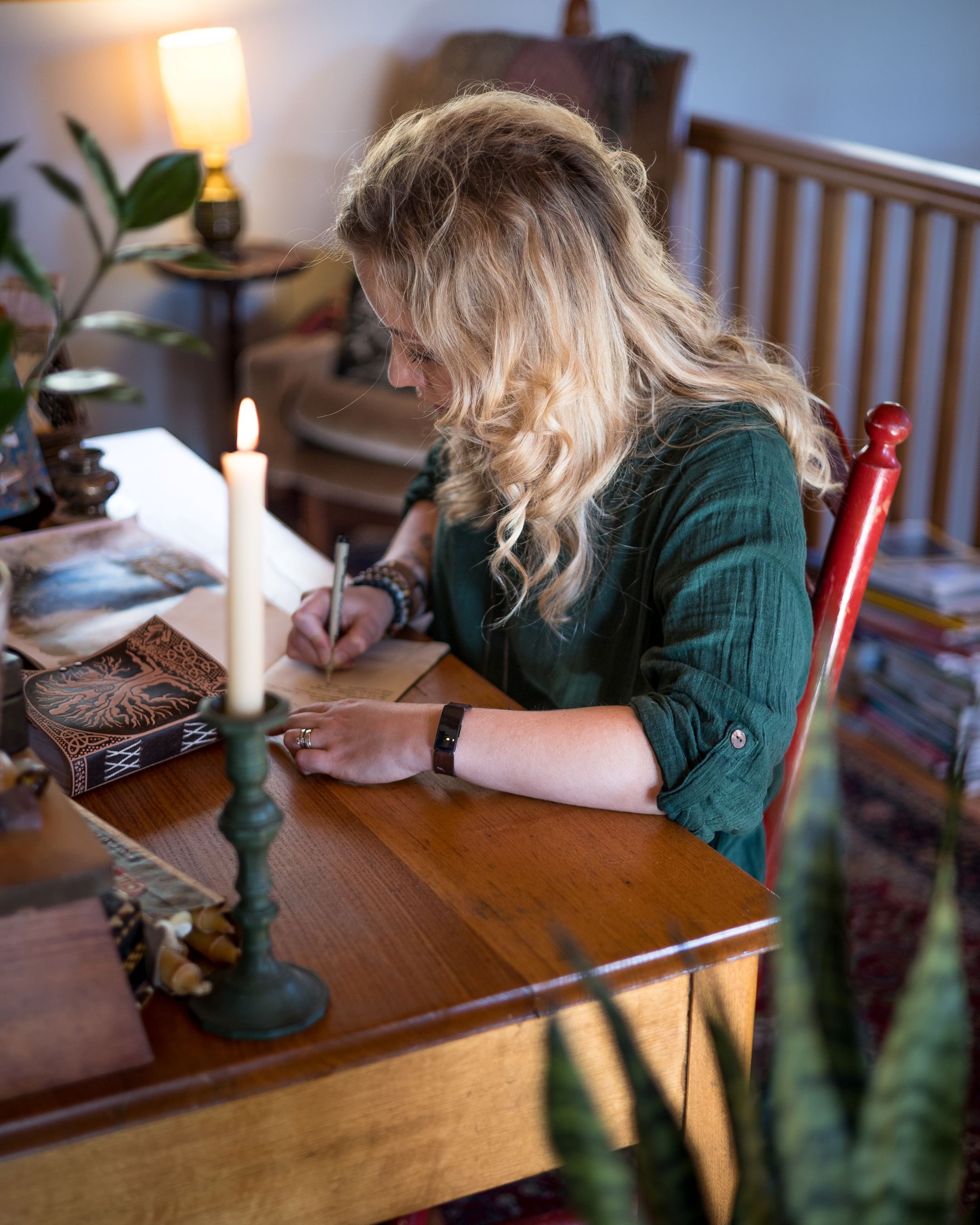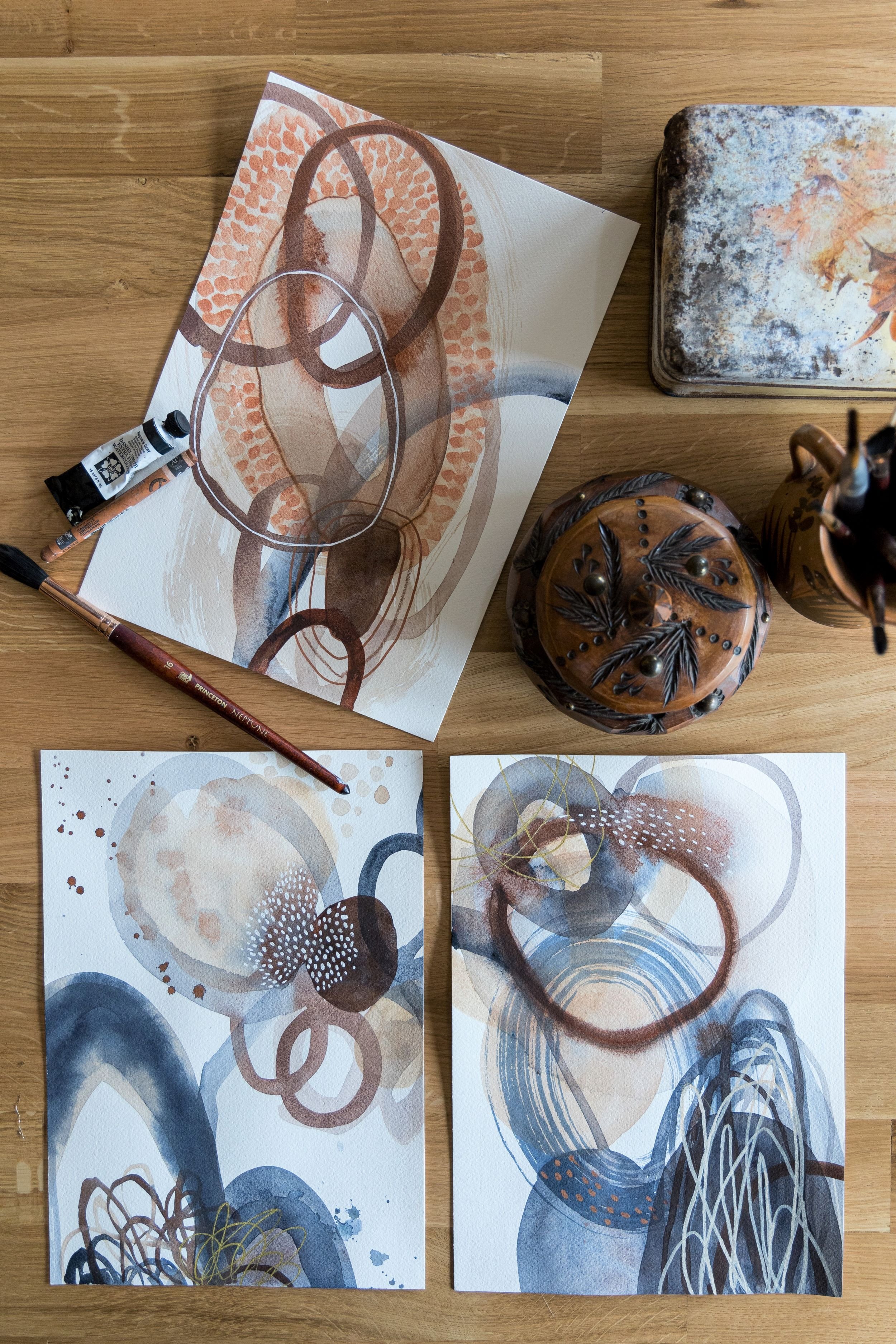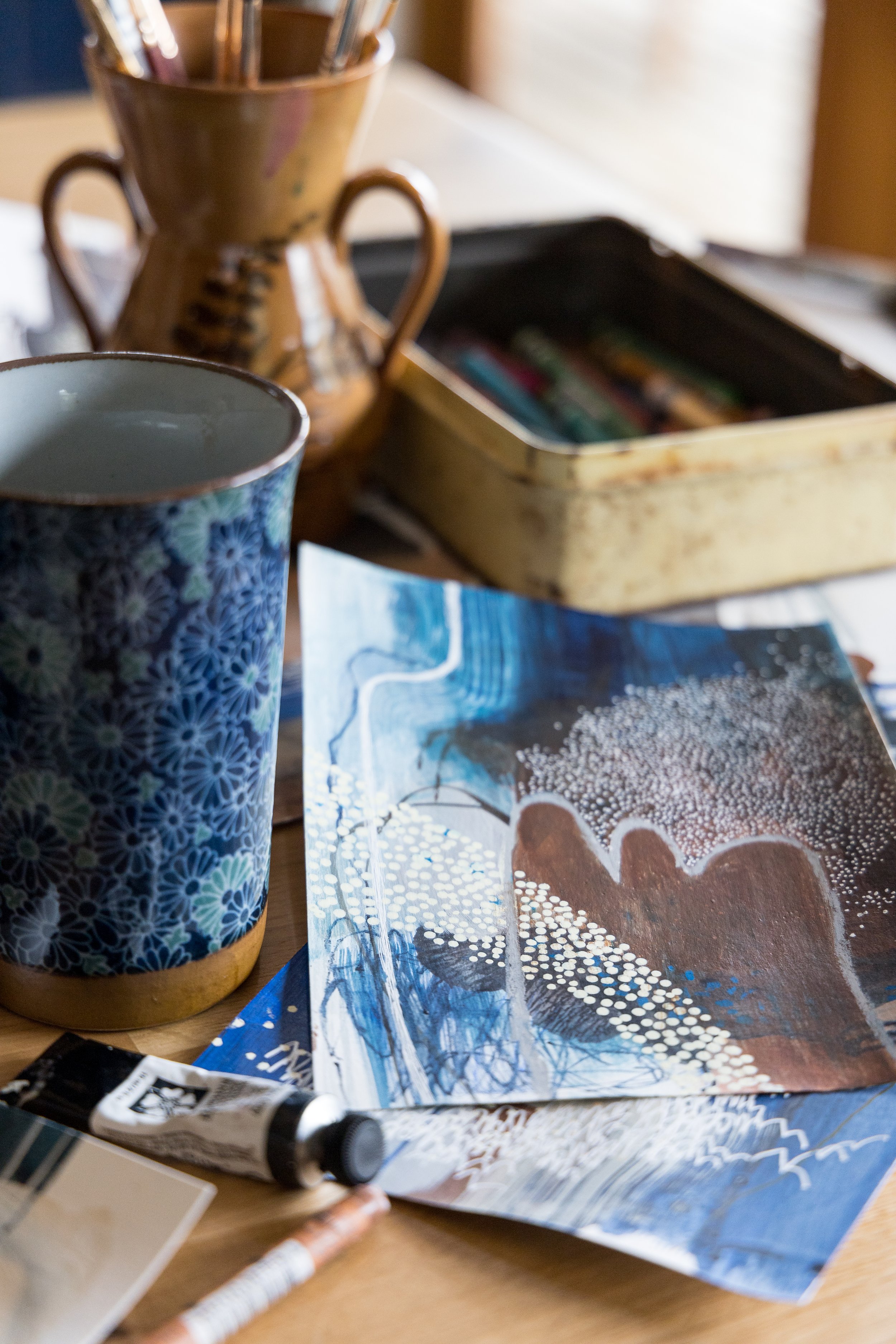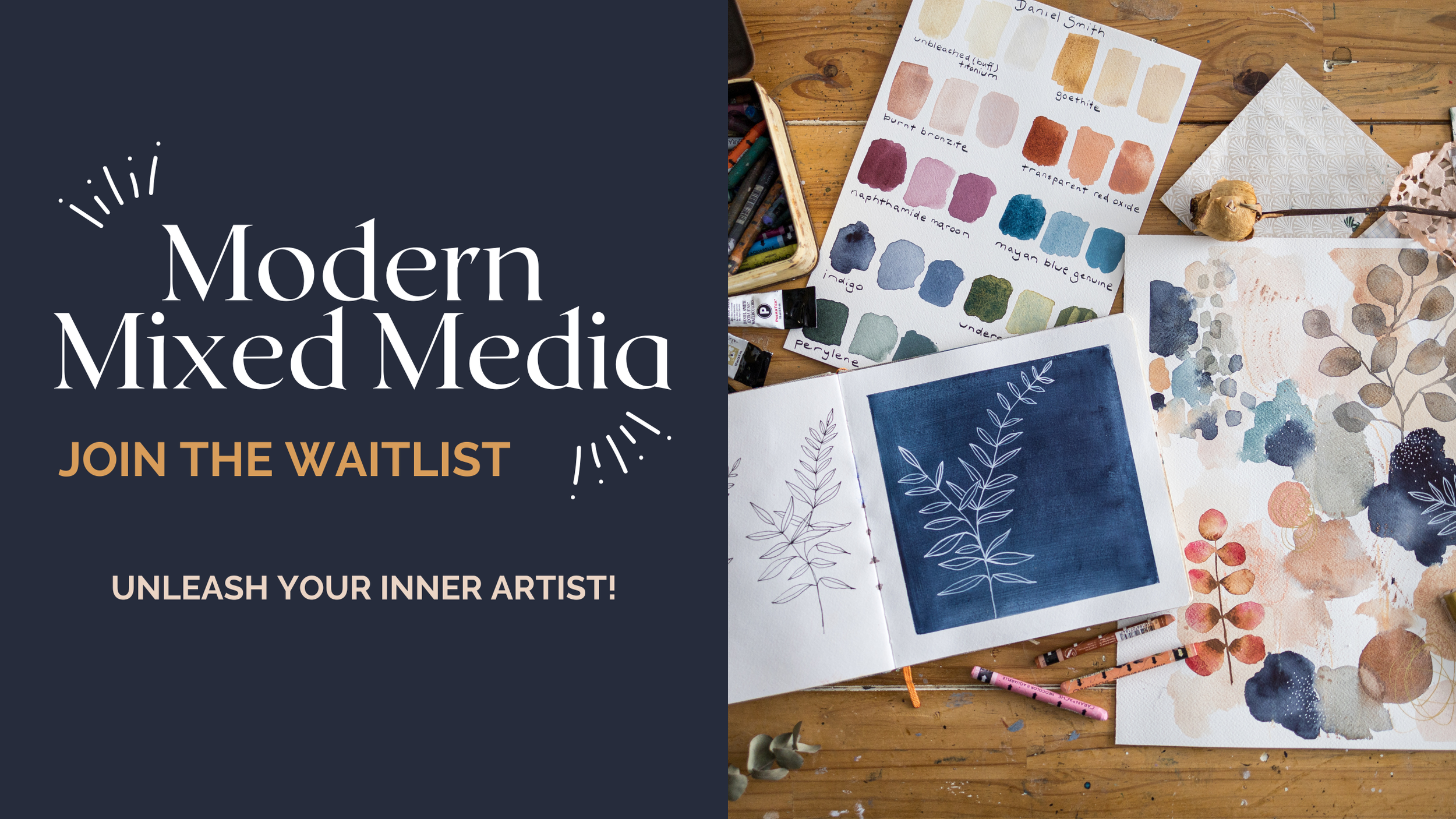Master the Finishing Touch: Gain Confidence in Completing Your Paintings
Have you ever found yourself struggling to decide when your painting is finished? If so, you're certainly not alone. Many artists relish the excitement of starting a new painting but find it difficult to persist through the uncertain phase and bring art pieces to completion. This can lead to feelings of stress, frustration, and self-doubt.
On the flip side of this, there’s nothing quite like the sense of accomplishment that comes from completing a painting. So, how do you overcome the pursuit of perfection and bring more art to completion?
Today, we are going to explore practical strategies and ideas to help you cross that finish line, including working on multiple pieces concurrently, taking process photographs, stopping before you think you are finished, and many more helpful tips.
These strategies can help you build confidence in your ability to complete artwork while also bringing more joy and satisfaction to your creative process.
The Power of Multiplicity: Working on Several Pieces Simultaneously
Let’s start with one of my favourite techniques: working on multiple pieces at once. I often start a painting session with at least two paintings on the go, often more. It’s much easier to stay loose when you have several pieces to spread your energy across. Also, when you work in this way, one of your paintings will likely become the easiest one to work on. This painting can then become the guiding light that helps you complete the remaining pieces. I like to think of these pieces as studio helpers! Whenever you feel stuck, you can turn to them for ideas for colours, marks, shapes, compositions, and more.
Another advantage of working on multiple pieces is that you don’t have to stop when a layer is drying. Instead, you can just move on to another piece. This will keep you from overworking your paints and will keep you in a state of flow.
Embracing the 80% Rule: Why Less Can Be More
The principle of giving 100% effort may not always lead to the best results, especially when it comes to painting. It sounds strange, but let’s dig in deeper here. Consider a situation where you are 80% satisfied with a painting but are trying to perfect the remaining 20%. During this last push, your work can become stiff, losing its earlier organic quality.
The recommendation here is to take a break at the 80% mark to see if that is actually the perfect ending point. Sometimes, stepping away from a painting for a while might allow you to see it in a new light, as being deeply involved can prevent us from seeing the bigger picture.
Time can be a gift, giving you the chance to reevaluate how finished your work really is. Many paintings succumb to being overworked; a pause can enable us to determine the necessary actions, if any, and allow us to concentrate on key decisions rather than endless tweaking.
It’s important to step back and take breaks so we can see our artwork with fresh eyes.
Change Your Perspective, Improve Your Artwork
Another tip is to bring your paintings out of your studio or wherever you are painting. Your artwork will always look different in the studio environment. Where you paint is likely to be cluttered and unstyled, whereas in a gallery or home, the piece will have an environment that suits the art.
Even just hanging a painting on a lounge room wall so you can look at it from different angles and in different lighting situations is incredibly helpful.
This can often highlight areas that need change. Another trick is to look at the painting in various positions, including upside down. This method can help identify imbalances, such as too much weight on one side. It may not be necessary for the painting to look good in the upside-down position, but it can help determine the need for counterbalance. Viewing art from different angles can be very helpful for improving a painting’s composition.
Embracing Completion over Perfection. The Power of Decisive Action
Every painting's journey to completion is unique. Some pieces come together effortlessly, like magic—with the right music and mood, they simply flow onto the canvas. In contrast, others require a more involved approach with plenty of back-and-forth and fine-tuning.
Taking time to contemplate your work can be beneficial. However, it's important not to let this reflection phase drag on for too long. As Leonardo Da Vinci wisely said, 'Art is never finished, only abandoned'. If you decide the piece needs more work, create a list of elements that stand out for revision. You might even want to set yourself a timeframe to confidently address these areas, and then call it a day.
Without decisive action and self-imposed time constraints, you can end up going around in circles. There will always be something to improve in your mind, as the potential of a painting is boundless. Art isn't an exact science, and therefore, it's crucial to cultivate the confidence to declare a piece done!
Consider viewing completion as closure rather than perfection. Closure provides a way to end the creative process, allowing you to learn from this particular work and continue to grow. It's crucial to differentiate between completion and perfection. Closure feels satisfying; it doesn't require perfection. You can look at a painting and acknowledge that it's achieved what it needs to for now. Then, it's time to put it away and move onto the next piece, free from the pressure of perfection.
Writing a list of actions to take, or setting a time limit can help with bringing tricky paintings to completion.
Learning from Process Photographs
Using progress photos as a learning tool is invaluable. It allows you to document the evolution of your painting. As you review these photos, you might find certain stages of the process that you love even more than the final result. And that's perfectly fine.
This retrospective process is an integral part of learning. By revisiting your photos, you can identify elements you were particularly drawn to at various stages. This insight can then serve as inspiration for your next piece.
As a tip, take photographs of your paintings and print them off, so you have a tangible reference. You can then use a pen or pencil to experiment with your composition directly on the printed photo. Whether you're considering adding another element or changing the layout, sketching on the photograph can provide a feel for how these adjustments might impact the overall work.
For those who prefer digital tools, you can achieve the same effect on your phone using a painting or drawing app. Another effective technique is to convert the photo to black and white. This allows you to focus on the values in the painting, providing a clearer understanding of the contrast. This can be particularly helpful in determining whether your painting has enough depth and dimension. Remember, every step of your process is a learning opportunity!
Revisiting Your Roots: The Role of Original Intentions
As you get closer to completion, it can be helpful to ask yourself if the painting has revealed its story. Did you capture the feeling you were after? If you are not sure, ask the painting for guidance. That might sound a bit woo-woo, but I find it helps!
Another thing that can help is returning to your initial source of inspiration, unless your painting has taken you on a completely different adventure! But if you had something that you started with, such as a specific intention or an idea that you were exploring, coming back to that and seeing if you've captured it or looking at how that has translated on the canvas and recognising how it feels can help you know if a painting is finished.
Returning to your inspiration source can help you decide if your work is capturing your ideas, feelings, and emotions.
Give Your Work an Identity—A Name!
Assigning an identity or a name to your painting can be a significant step in the creative process, often signaling that a piece is finished. As you approach this final stage, you may want to start contemplating possible titles for your painting. The act of putting words and a description on your painting can help you bring a sense of closure to the piece and an understanding of what the piece is about.
Bear in mind that the title doesn't necessarily need to be descriptive or revelatory to others, as the meaning of your painting can remain personal to you. However, this naming process is a valuable exercise in introspection. Ask yourself, What does this piece mean to me? What name would encapsulate its journey and essence? These reflections can stimulate your finishing mindset, signaling that you're entering the final phase of the creative process.
Sometimes, the title of a painting emerges organically. You might experience a gut feeling about what this piece should be called, triggered by a song lyric you hear while painting or a particular element in the artwork that catches your eye. When the title seems to magically appear, embrace it, write it down, and let it guide you to the finish line.
The Real Question: Does it Feel Done?
Determining whether a piece is complete can often be a deeply personal and intuitive process. You might instinctively feel that a painting isn't finished if something about it bothers you, even if you can't pinpoint what that something is. It could be a colour palette that doesn't sit right or perhaps a composition element that feels off-kilter.
If the issue isn't immediately apparent, it can be helpful to observe how your eyes move across the painting. Are they getting stuck in a particular area? Perhaps there's a certain element drawing too much attention, overshadowing the aspects you want to emphasise. Remember to consider the negative space as well; the area around your main elements can be just as important as the active areas of the painting.
So, how do you decide when a painting is truly finished? It's not about achieving an impossible standard of perfection. It's about your personal feelings towards the piece. Does it feel complete to you? Are you ready to set your brush down, step back, and let it be? Does the thought of declaring it 'done' bring you a sense of satisfaction?
It's crucial to remember that you can endlessly tweak and adjust a painting, but completion isn't about perfection. It's not something for others to judge. It's about you, your feelings, and your personal journey with each piece. Ultimately, when a painting is finished, is a decision only you can make.
Only you can decide when your work is finished. As Leonardo Da Vinci wisely said, 'Art is never finished, only abandoned'.
Want more inspiration for your creative journey?
Unlock Your Creative Potential with my signature 6-Week Online Course: Modern Mixed Media!
Ready to Immerse yourself in the captivating world of watercolors, botanical motifs, and mixed media? Over 6 weeks, you will build skills and discover your unique style while working through step-by-step projects and creative exercises.
This is not just any course; it's my most interactive and engaging course to date. Throughout the six weeks, you won't be alone on your creative journey; you'll receive continuous support, feedback, and encouragement directly from me. With lifetime access, participants thrive during the intensive six weeks, experiencing both structure and flexibility.
You’ll gain confidence in every step of the creative process, from gathering inspiration to finishing paintings and framing them on your wall!
Be the first to know about enrollment—join the waitlist for an exclusive early-bird offer!
👉 Join the Waitlist Here and embark on your transformative creative journey with "Modern Mixed Media"!
